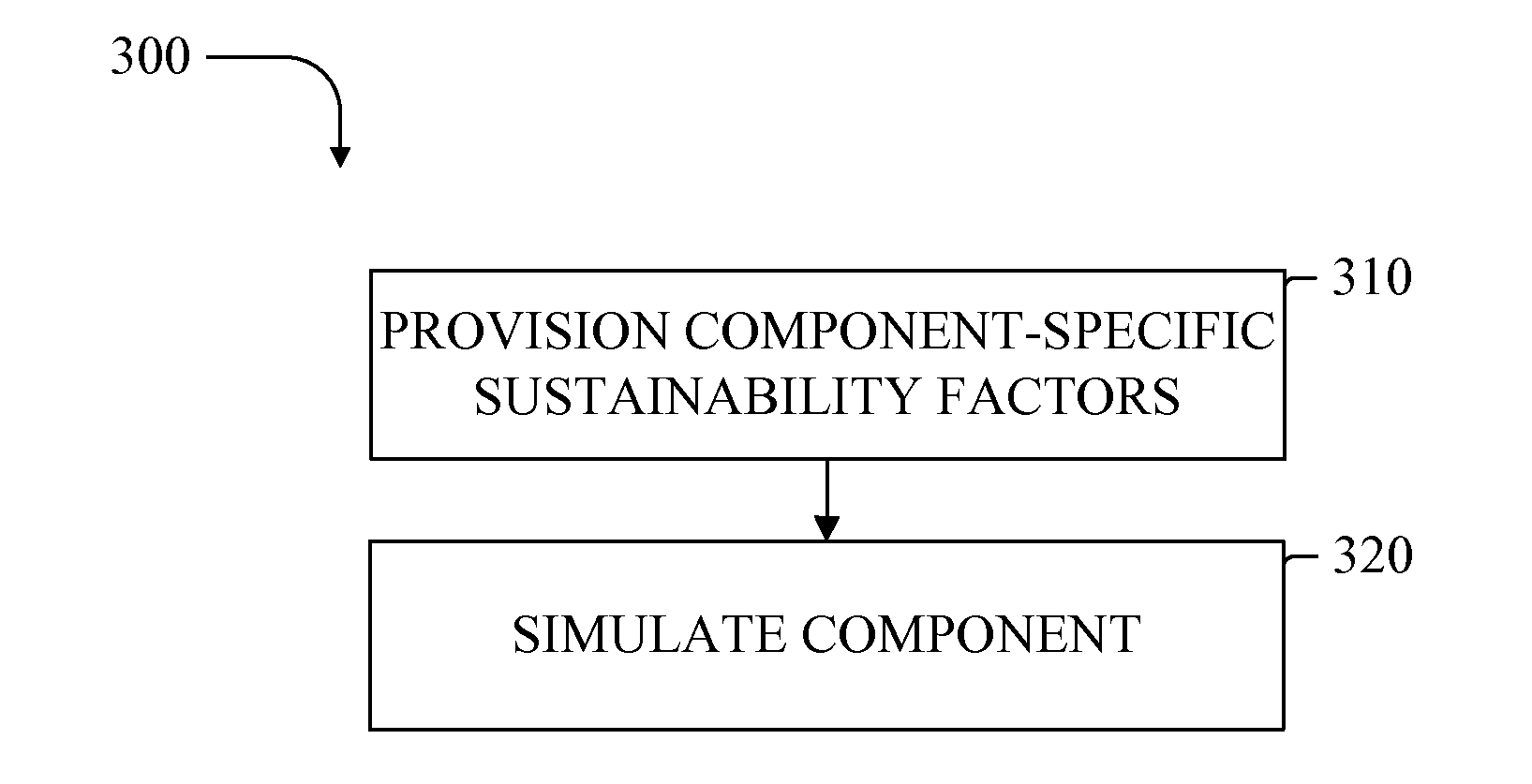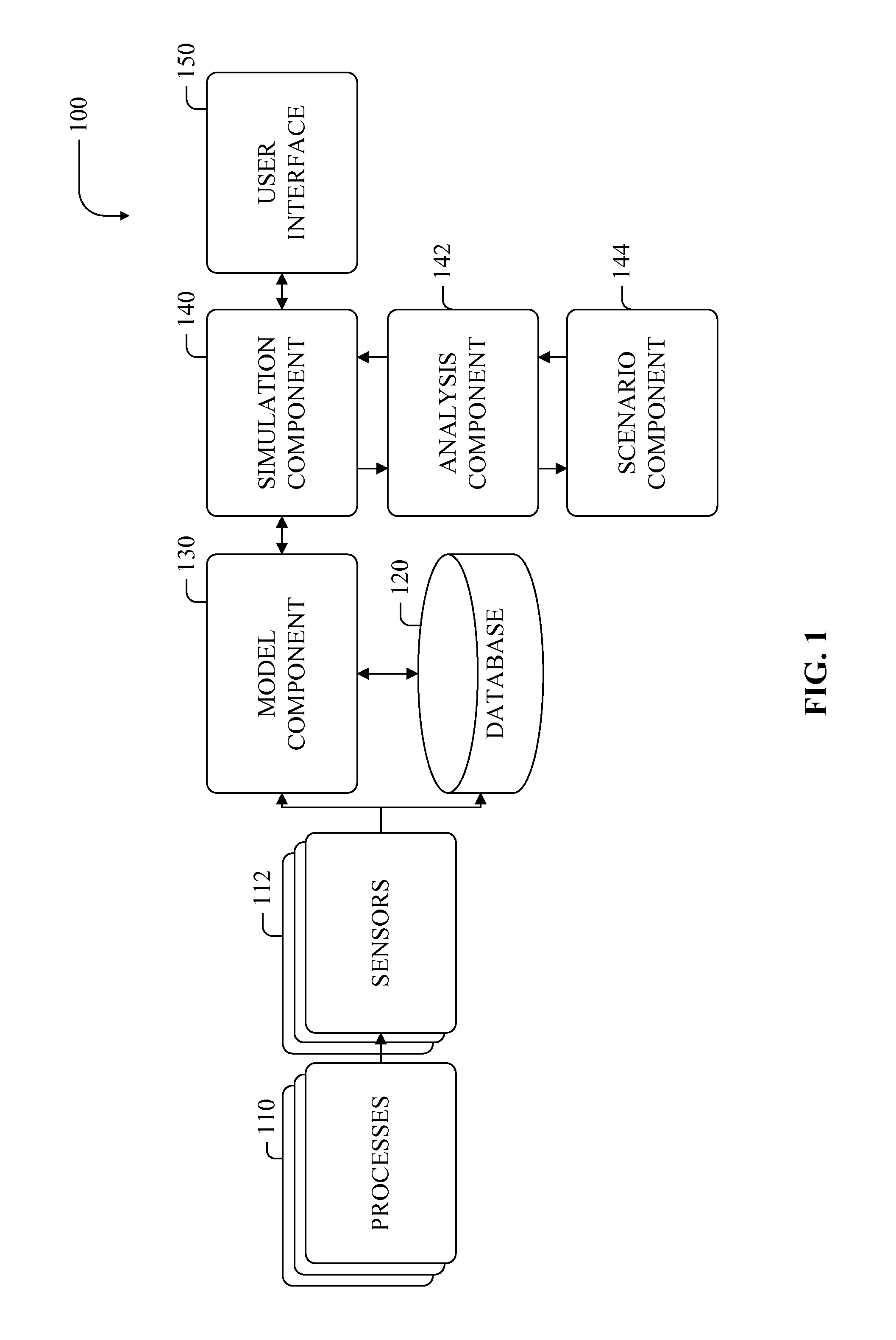Process simulation utilizing component-specific consumption data
a consumption data and process simulation technology, applied in the field of simulation, can solve the problems of insufficient comprehensive view of other sustainability factors, inability of manufacturing plants to focus exclusively on raw materials and equipment, and inability to fully understand other sustainability factors, so as to achieve greater support for decisions and procedures, and reduce costs
- Summary
- Abstract
- Description
- Claims
- Application Information
AI Technical Summary
Benefits of technology
Problems solved by technology
Method used
Image
Examples
Embodiment Construction
[0020]Methods and apparatus are provided for analyzing, simulating and optimizing components using discrete, adaptable-resolution, component-specific data relating to sustainability factors including (but not limited to) energy consumption. In one aspect, the energies used and byproducts generated by a component in a specific application are modeled to allow more accurate and complete simulation of the component and its impact on a system or facility, and the system or facilities' operation, cost-containment, efficiency and / or regulatory compliance. Component-specific consumption data can be employed to simulate that component, which can be viewed in isolation or as a constituent of a plurality of components acting in concert and influencing one another.
[0021]Referring initially to FIG. 1, an example system 100 illustrates a framework for simulating systems in terms of discrete, component-specific consumption data. Processes 110 operate in a live or real-time environment to allow me...
PUM
 Login to View More
Login to View More Abstract
Description
Claims
Application Information
 Login to View More
Login to View More - R&D
- Intellectual Property
- Life Sciences
- Materials
- Tech Scout
- Unparalleled Data Quality
- Higher Quality Content
- 60% Fewer Hallucinations
Browse by: Latest US Patents, China's latest patents, Technical Efficacy Thesaurus, Application Domain, Technology Topic, Popular Technical Reports.
© 2025 PatSnap. All rights reserved.Legal|Privacy policy|Modern Slavery Act Transparency Statement|Sitemap|About US| Contact US: help@patsnap.com



